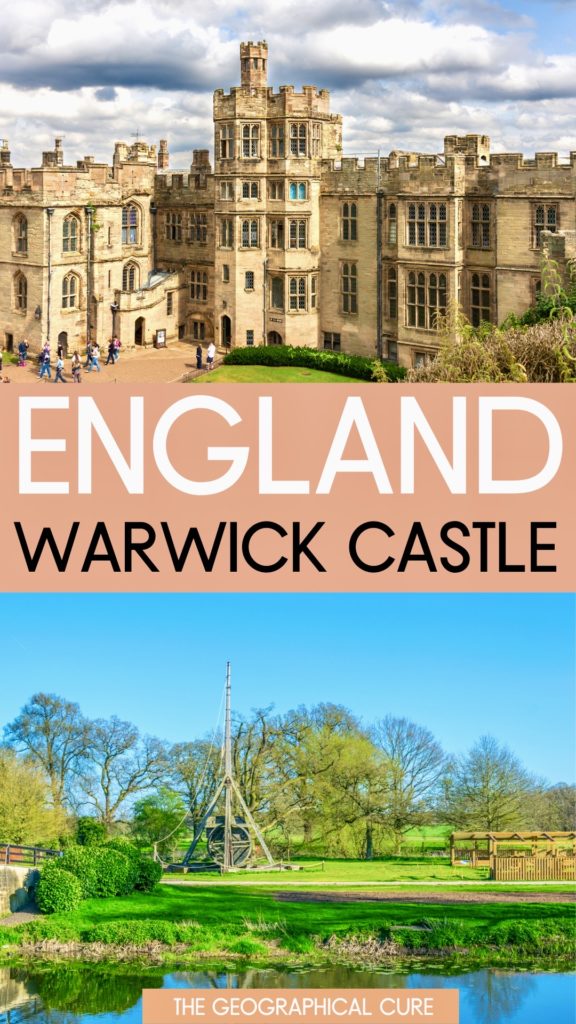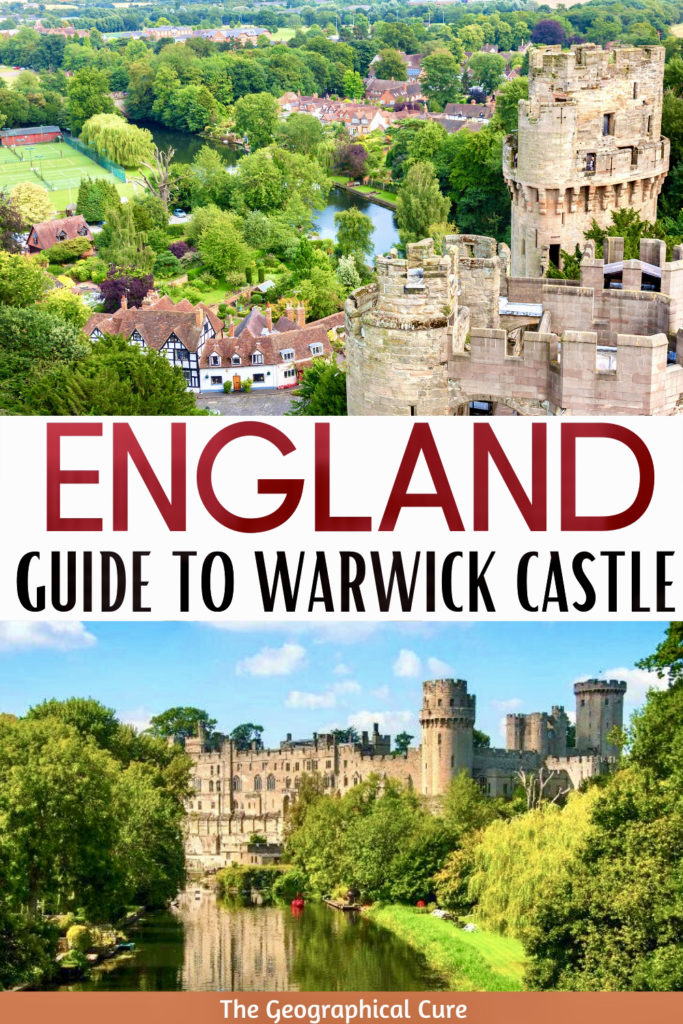Planning a visit to England’s Warwick Castle?
The castle is a medieval marvel and one of England’s top attractions. In this guide, I tell you everything to see and do at Warwick Castle and give you tips for visiting.
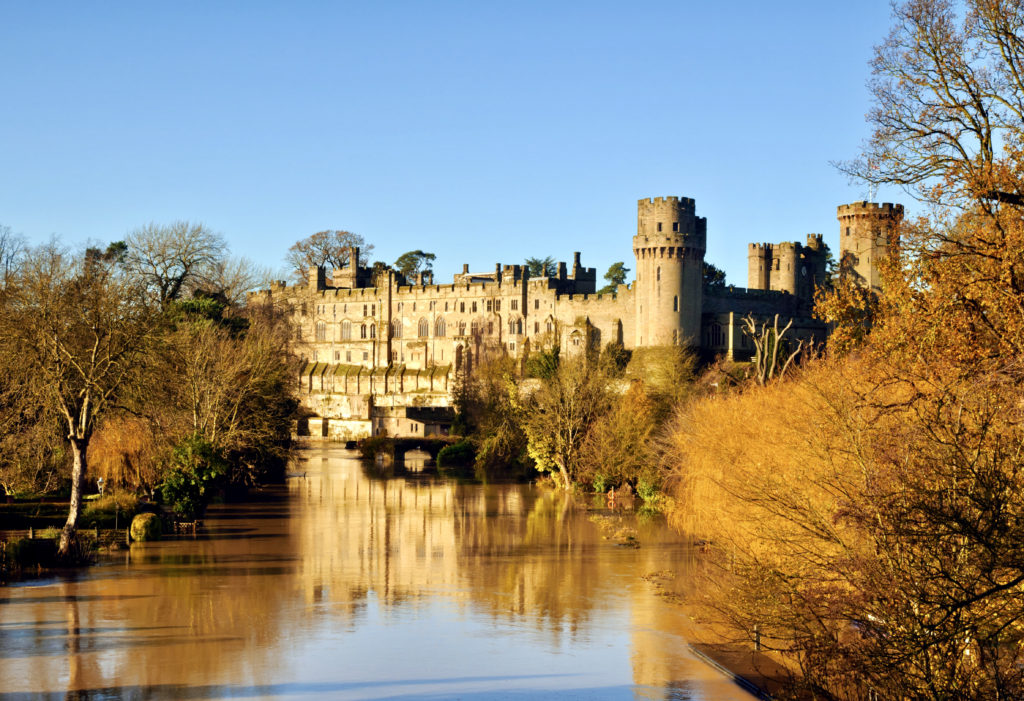
Warwick Castle is one of the most significant castles in English history. It was built by a king and home to the warmongering Duke of Warwick, Richard “the Kingmaker” Neville.
The legendary Warwick Castle shaped 900 years of British history. It was the backdrop for the most famous dynasties and dynastic conflicts in England.
The castle was an important defensive stronghold in the Wars of the Roses and the English Civil War.
It’s everything you’d expect in a storied fairytale castle – crenellated turrets, moats, and dungeons.
Today, the castle prides itself on bringing history to life.
Displays in the castle include period furnishings, extraordinary life-like waxwork models, the state rooms, and reenactments that aim to give you insight into what life was like in a medieval castle.
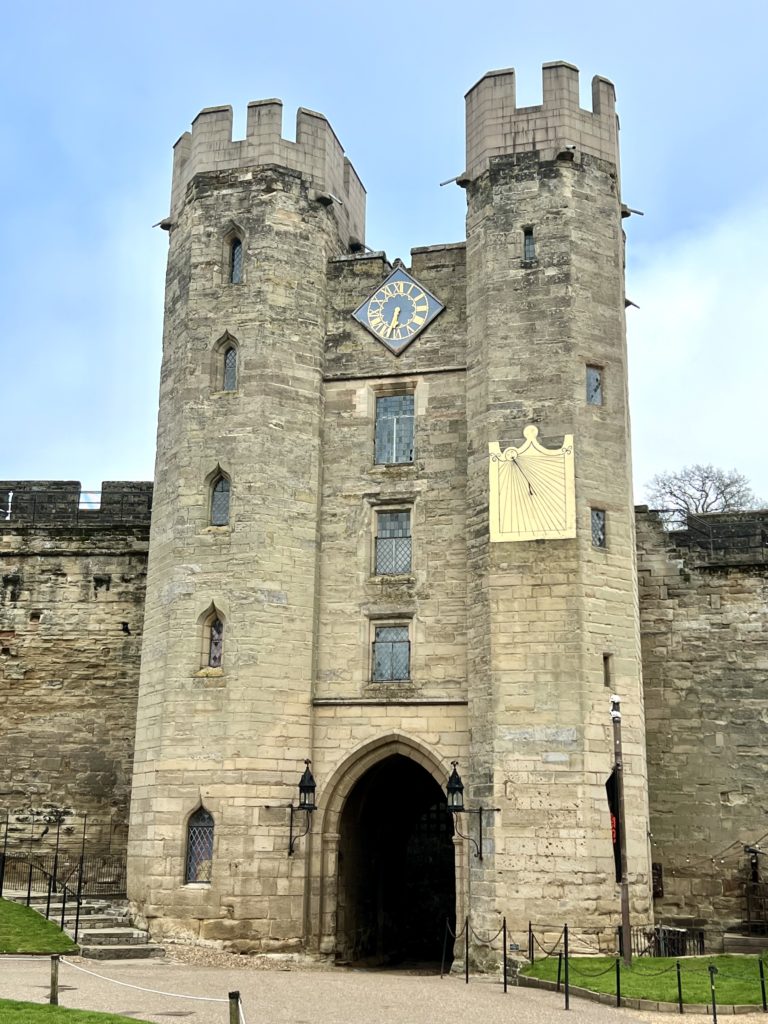
History of Warwick Castle
In 1068, William the Conqueror commissioned Warwick Castle. The Castle is perched on a hill above a bend in the River Avon, a natural position for a fortified castle.
William the Conquerer built a moat and bill castle out of wood on what he dubbed Conqueror’s Hill. It would take two centuries to transform it into a defensive stone castle.
The first noble to own the property was Henry de Beaumont. In 1088, he became the first Duke of Warwick.
In 1246, Simon de Monfort captured the castle. He accomplished this feat with a new weapon called a trebuchet.
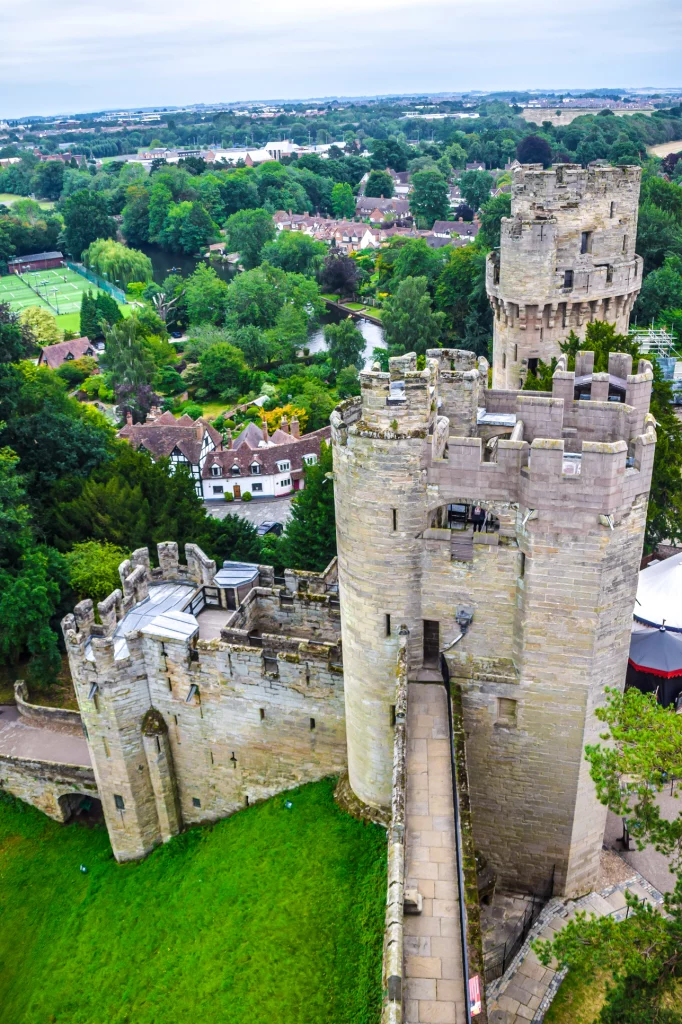
Montford even captured King Henry III and, for a time, ruled England. He is credited with establishing the first English Parliament.
Henry was eventually returned to the throne and the title of Earl of Warwick passed to William de Beauchamp, whose family ruled for the next 180 years.
In 1312, one of the most notorious events in English history occurred at Warwick Castle — the abduction, trial, and execution of Piers Gaveston, homosexual lover of Edward II. Gaveston was murdered and possibly Edward II as well.
His son Edward III took over. His reign marked a high point of the Age of Chivalry. Warwick Castle was the site of tournaments, feasts, and all the things we associate with knights in shining armor.
The Beauchamps were succeeded by Richard Neville as 16th Earl of Warwick in 1449. He was one of the most prominent of all Warwickians, earning the sobriquet “The Kingmaker.”
Neville was a a central character in the Wars of the Roses. This three decade war was the epic battle between the York and Lancastrian branches of the royal Plantagenet family.
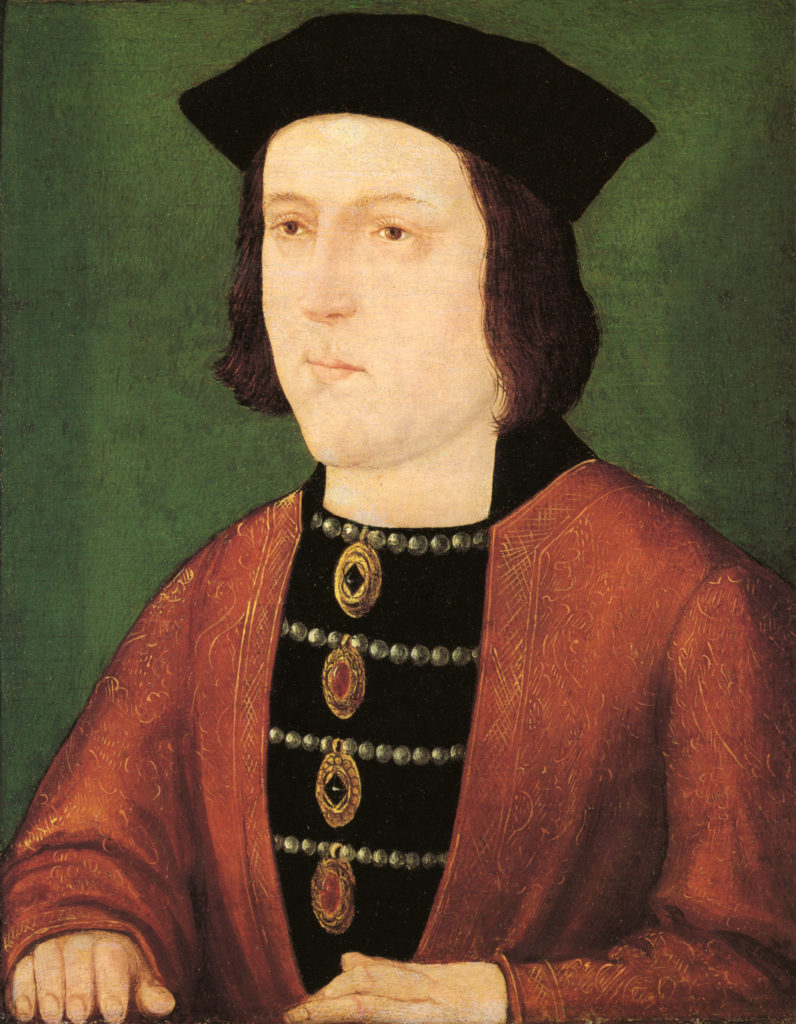
Neville deposed Henry VI, a Lancastrian, in favor of Edward IV, a York. For awhile, the pair were friendly and Neville was the virtual ruler. He amassed enormous power and a personal fortune.
But then, to the horror of the royal court, Edward IV secretly married Elizabeth Woodville, a low born Lancastrian widow. This drove a wedge between the Kingmaker and Edward IV.
A war ensued. In 1469, Neville captured and held Edward IV prisoner in Warwick Castle. Protests forced him to release the king. Karma struck back when Edward IV defeated and killed Neville in the Battle of Barnet in 1471.
In 1483, Edward IV fell sick and unexpectedly died, probably from pneumonia after a fishing trip. But there is speculation that he was poisoned.
His brother Richard III was declared Protector of the Realm and, having married the Kingmaker’s daughter, took possession of Warwick Castle.
READ: Whodunit? Did Richard III Kill the Princes in the Tower of London?
Richard didn’t last long. In 1485, Henry Tudor vanquished Richard III in the Battle of Bosworth, seized the throne by conquest, and was crowned Henry VII.
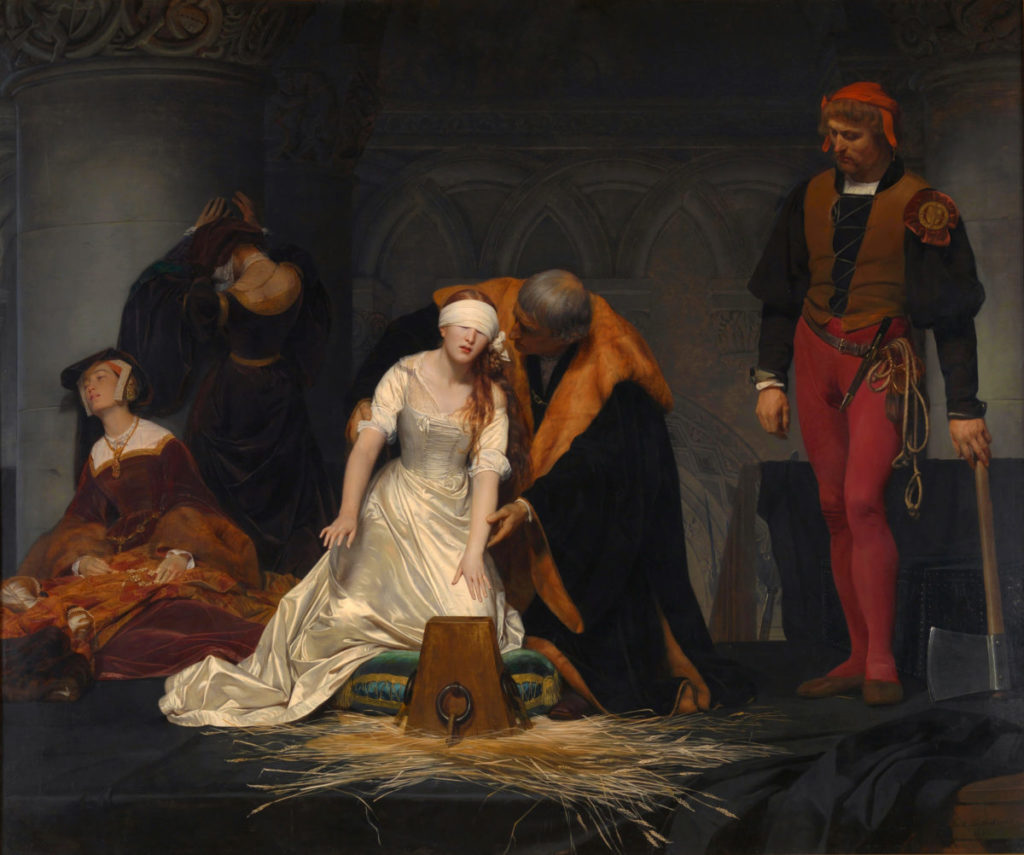
His son, Henry VIII, visited Warwick Castle twice during his reign. His daughter Elizabeth I visited the castle to see her paramour Robert Dudley, Earl of Leicester.
In 1547, the castle came into the possession of the Dudleys. More foul play ensued starting with John Dudley.
He was another Earl of Warwick supported by Henry VIII. When Edward VI was sickly, Dudley backed Lady Jane Grey for the throne.
Lady Jane ruled for only nine days. She and Dudley were imprisoned and executed at the Tower of London. Another Earl of Warwick goes down flames.
In 1604, James I gave Warwick Castle to Sir Fulke Greville. Greville was murdered in London. But it’s said his ghost haunts Warwick Castle, sometime emerging from his portrait.
Over the years, the Grevilles improved the property, transforming it into a grand country home that welcomed monarchs.
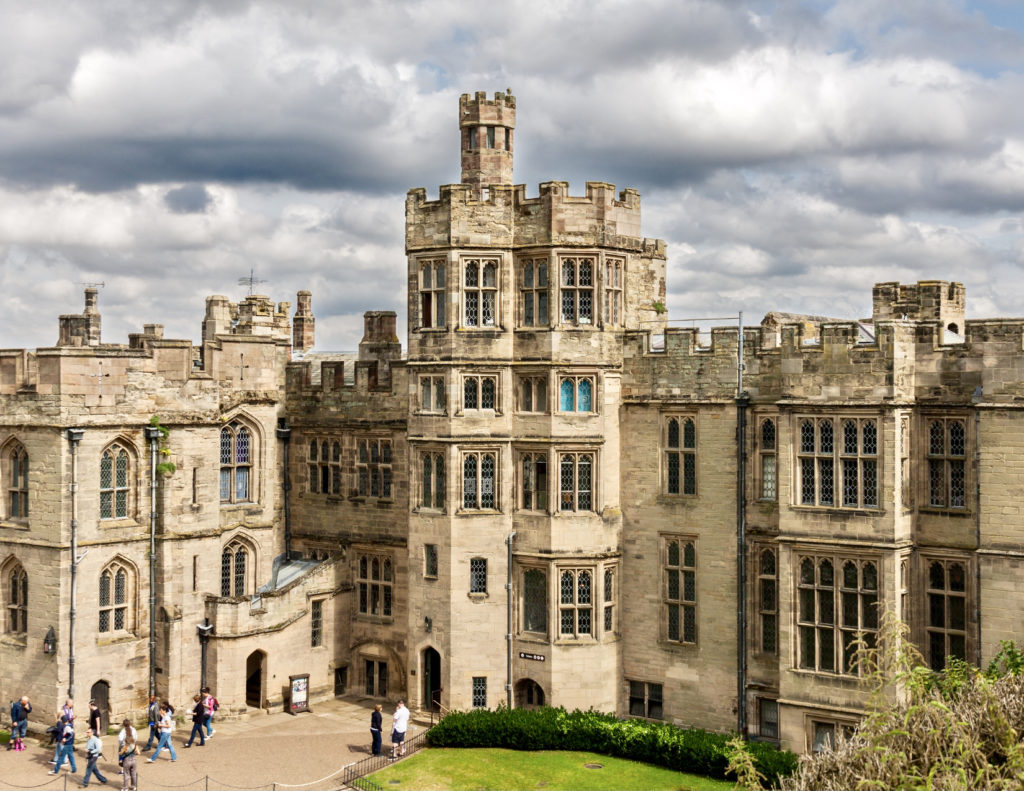
Warwick Castle was the seat of the Earls of Warwick until 1978.
On 1978, Warwick Castle was sold to Merlin Entertainment and the castle opened to the public. Merlin has spent over $20 million dollars in castle restoration work.
Today, you’ll find a wide range of things to see and do at Warwick Castle. Visitors can tour the grounds and learn about the castle’s history. There are also plenty of immersive children’s activities.
Tickets & Tours of Warwick Castle
Warwick Castle is a popular activity. If you want to avoid a long line to enter, click here to book a skip the line ticket. Entrance to the Castle Dungeons is a separate ticket.
From London, you can book a self guided tour that includes train and entry tickets. You can book a private guided tour from London.
Their are combination tours as well. You can combine Warwick, Stratford-Upon-Avon, and Oxford on a guided day tour from London. You can also combine Warwick, Stratford, and Blenheim Palace on a guided tour.
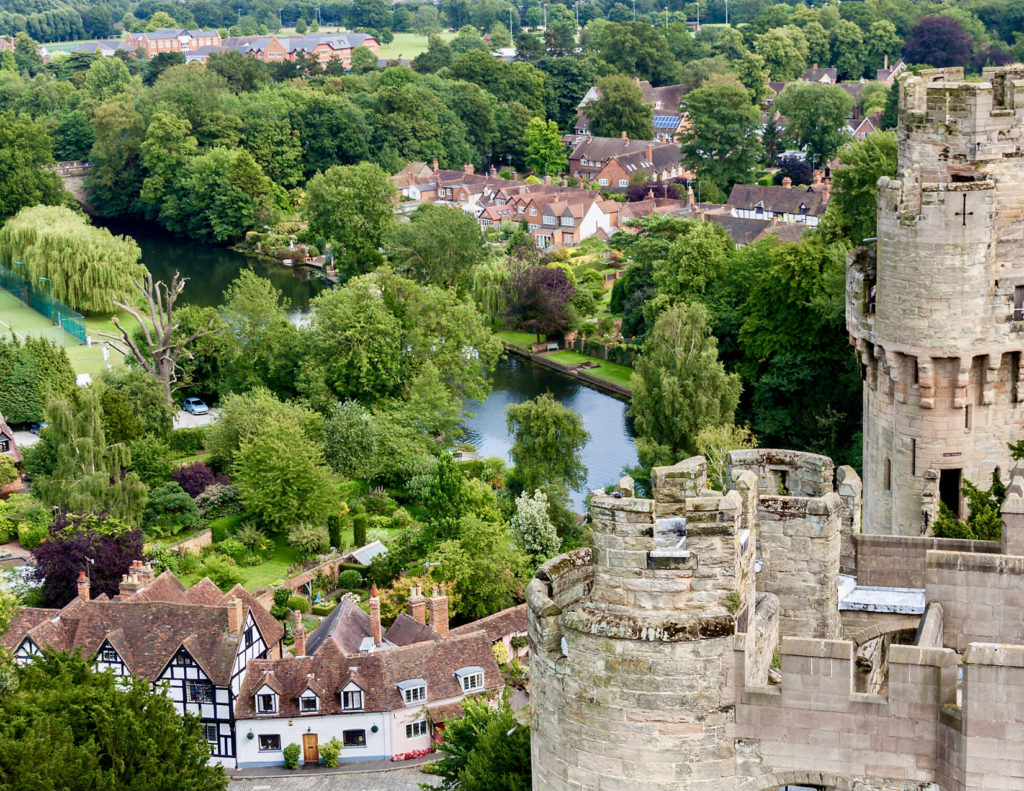
Guide To Warwick Castle: What To See
Once you’re inside the Castle walls, start by grabbing a map. The castle grounds are vast and this will help you know where things are located.
Here’s what you can see and do at Warwick Castle.
1. Ramparts
Taking a spin on the ramparts is one of the best things to do at Warwick Castle. It’s here that the castle feels the most ancient and authentic.
But it’s quite a climb up to the ramparts. You’ll see signs warning you about the difficulty. If you’re up for it, the views are spectacular. You enter through the Clarence Tower.
2. Towers
Guy’s Tower
From the curtain wall, you will trek to the 12 sided Guy’s Tower. During the Middle Ages, this tower was used for accommodation. It even housed kings Henry V and Henry VI.
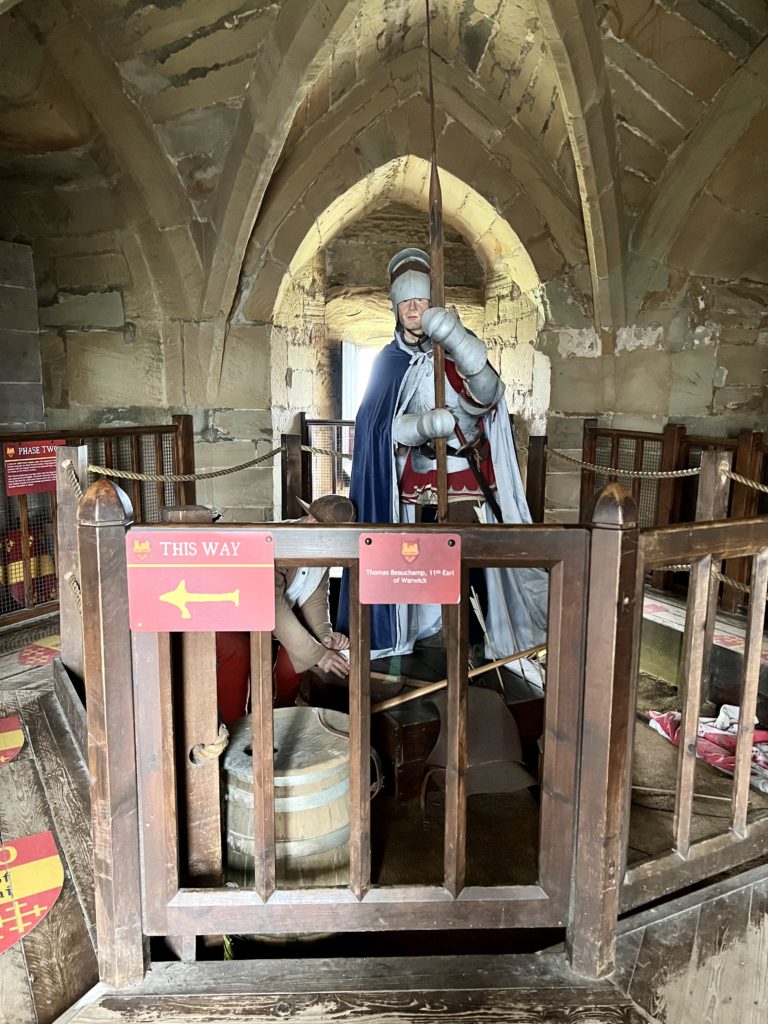
Guy’s Tower also has authentic “machicolations.” These are openings in the merlons at the top of the tower through which rocks or other unsavory items (like quick lime) could be dropped on the attackers below.
From the tower, you’ll have great views of the castle exterior.
Caesar Tower
Casaer’s Tower was built in the late 14th century. It features a rare double parapet.
The tower held noble prisoners of war waiting to be ransomed off, including King Edward IV whom the Kingmaker imprisoned there. From the tower, you have nice view of Warwick Cathedral.
3. Great Hall
In 1604, James I gifted the castle to Sir Fulke Greville. The castle was in grave disrepair at the time. Sir Fluke set about restoring the Great Hall and the State Rooms.
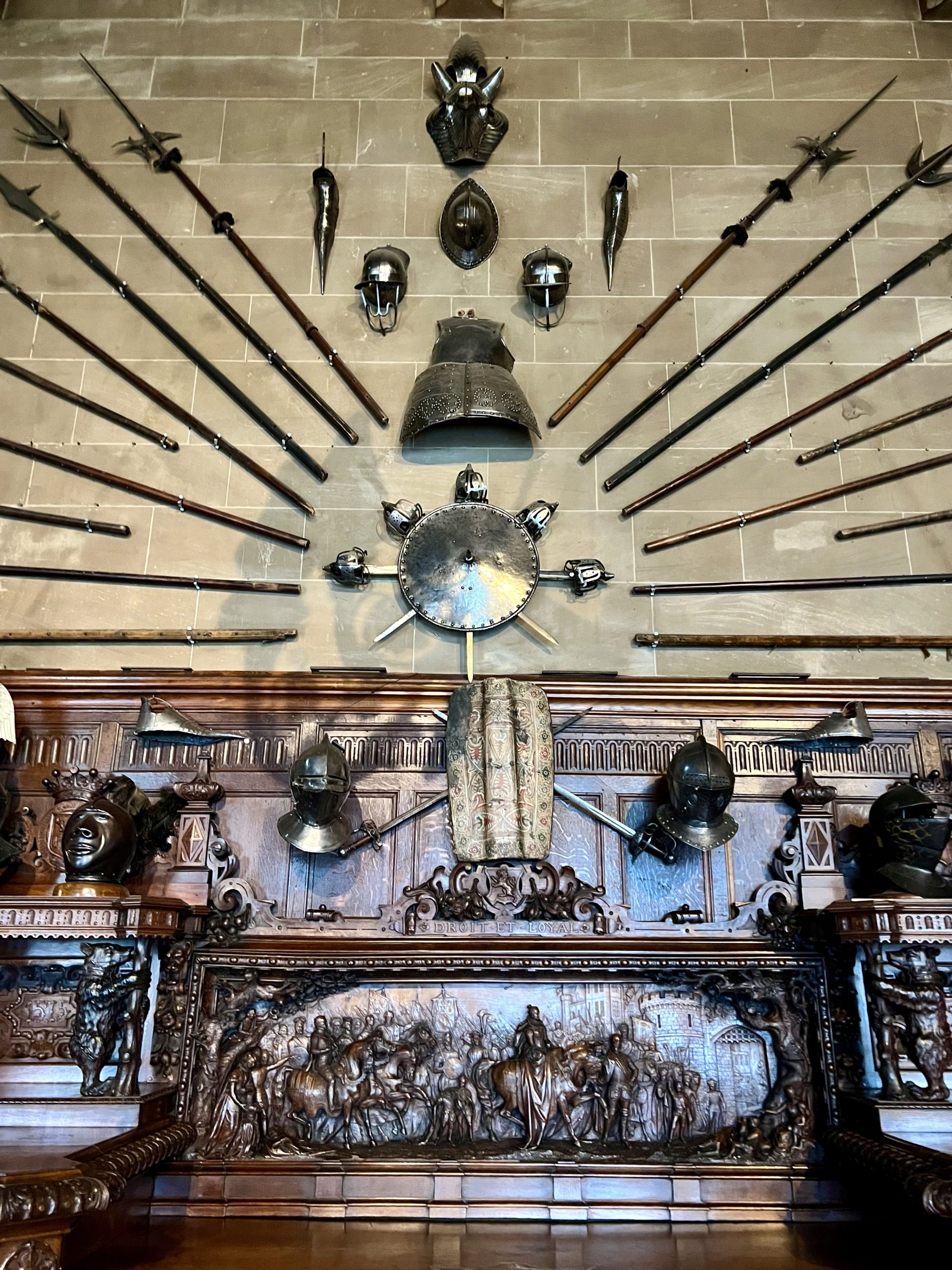
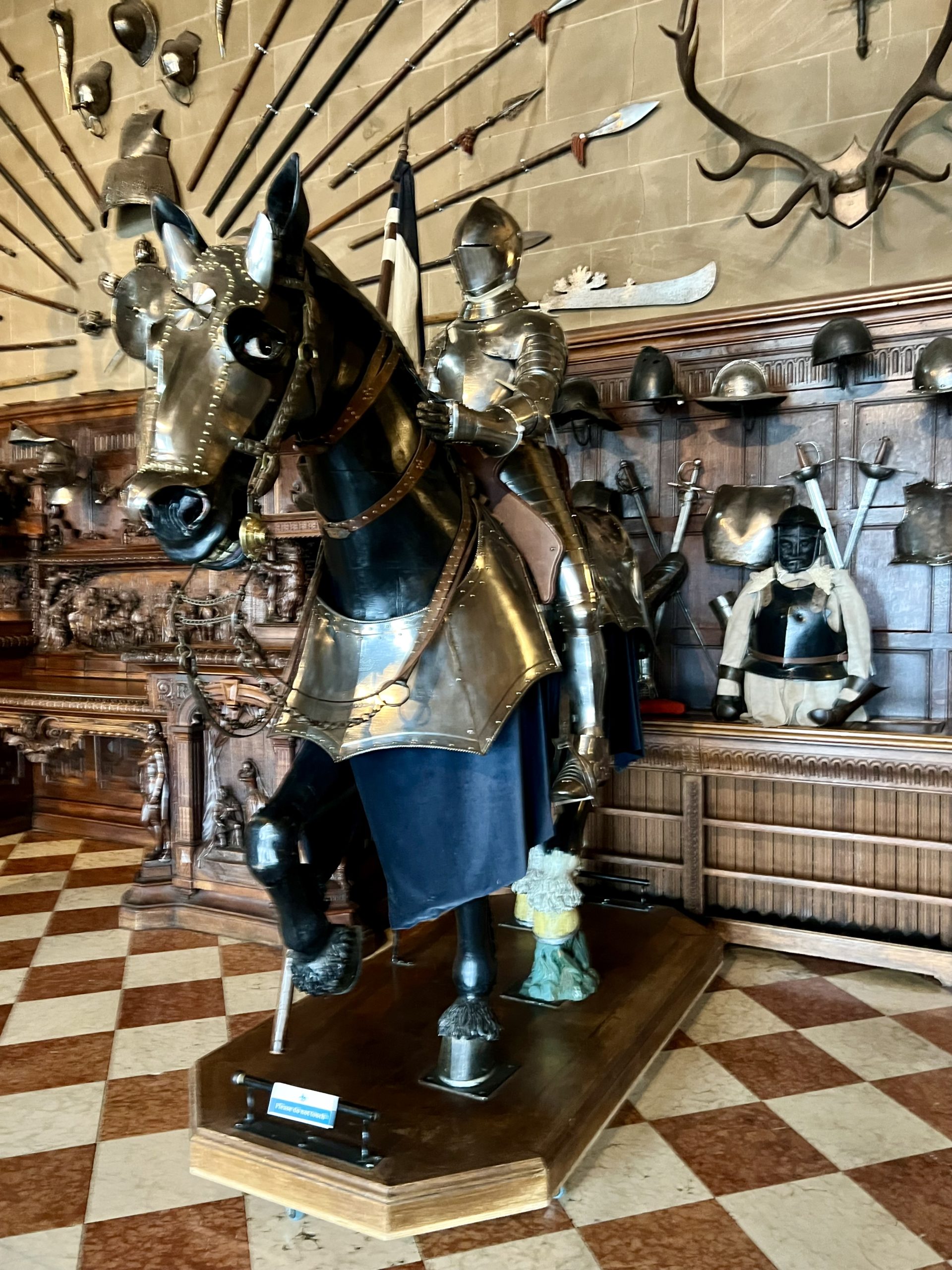
The foundations of the Great Hall were laid in the 13th century. But the room you’ll see was rebuilt in the 17h century.
It was designed to evoke a romantic medieval castle, with checkerboard floors and Gothic arches. It was the first room visitors would see when entering the castle. So, it was intended to reflect the power and wealth of its owners.
In 1871, a fire consumed the great hall. But servants saved much of the precious collection inside.
In the 1870s, George Greville began remodeling the Great Hall and restoring the wood paneling.
The Great Hall houses the pride of the Warwick Castle collection, a great collection of arms and armor.
Another treasure in the Great Hall is the Kenilworth Buffet. It was carved from a single oak tree for the Great Exhibition of 1851. The carvings in it depict scenes from Sir Walter Scott’s poem Kenilworth and images of Elizabeth I.
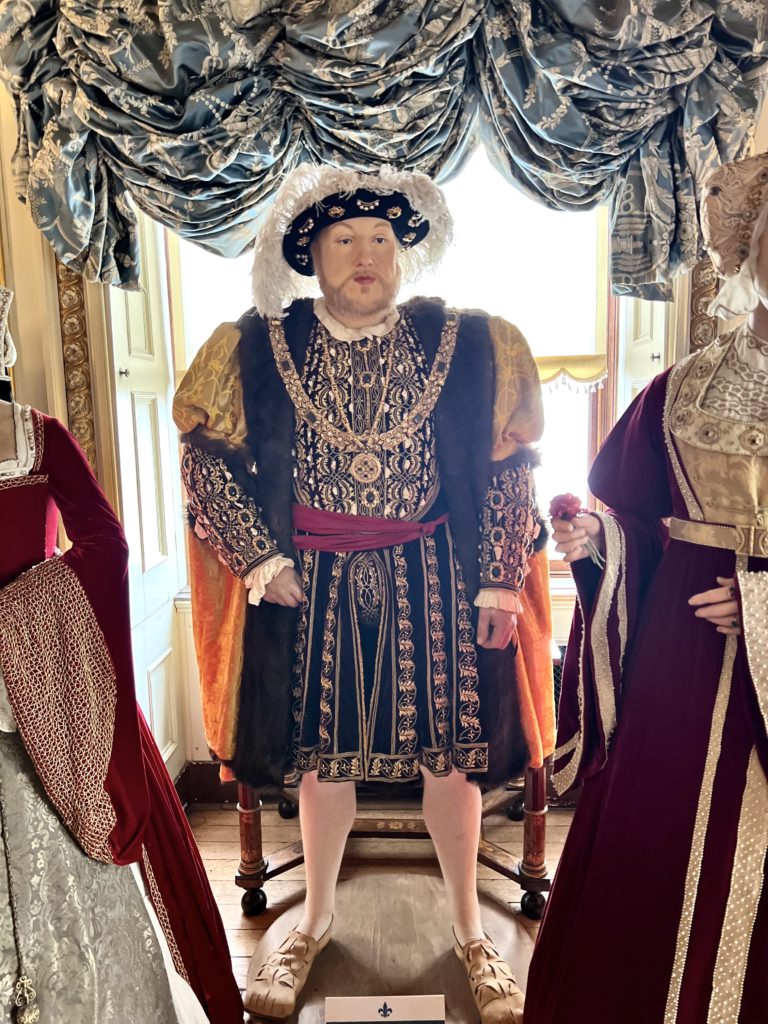
4. State Apartments
After the Great Hall, you head to the State Rooms. The Red Drawing Room has waxworks of Henry VIII and his six wives, placed in order of their marriage (“divorced, beheaded, died, divorced, beheaded, survived”).
The Cedar Drawing Room was the center of the house and where guests would spend their time in the evening.
The Green Drawing Room was reserved for men. It has a beautiful coffered ceiling, one of the notable architectural features of the castle.
There’s a waxwork of Oliver Cromwell and original armor worn by Robert Greville. There’s even a secret door, if you look carefully.
The Queen Anne bedroom is the grand state bedroom. It once belonged to Queen Anne, who was the last monarch of the Stuart line. Her bed is on display. It came from Kensington Palace, where she died.
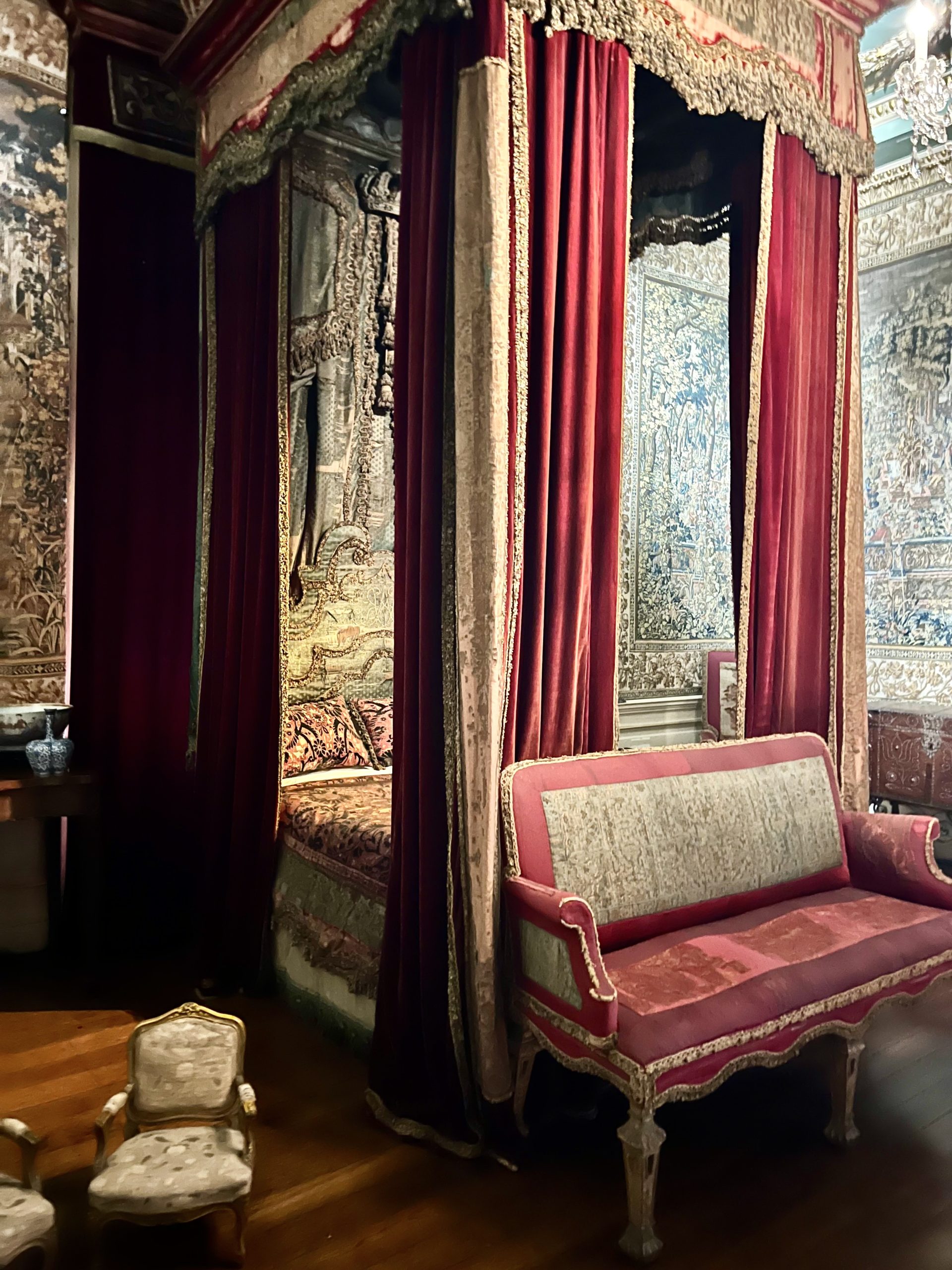
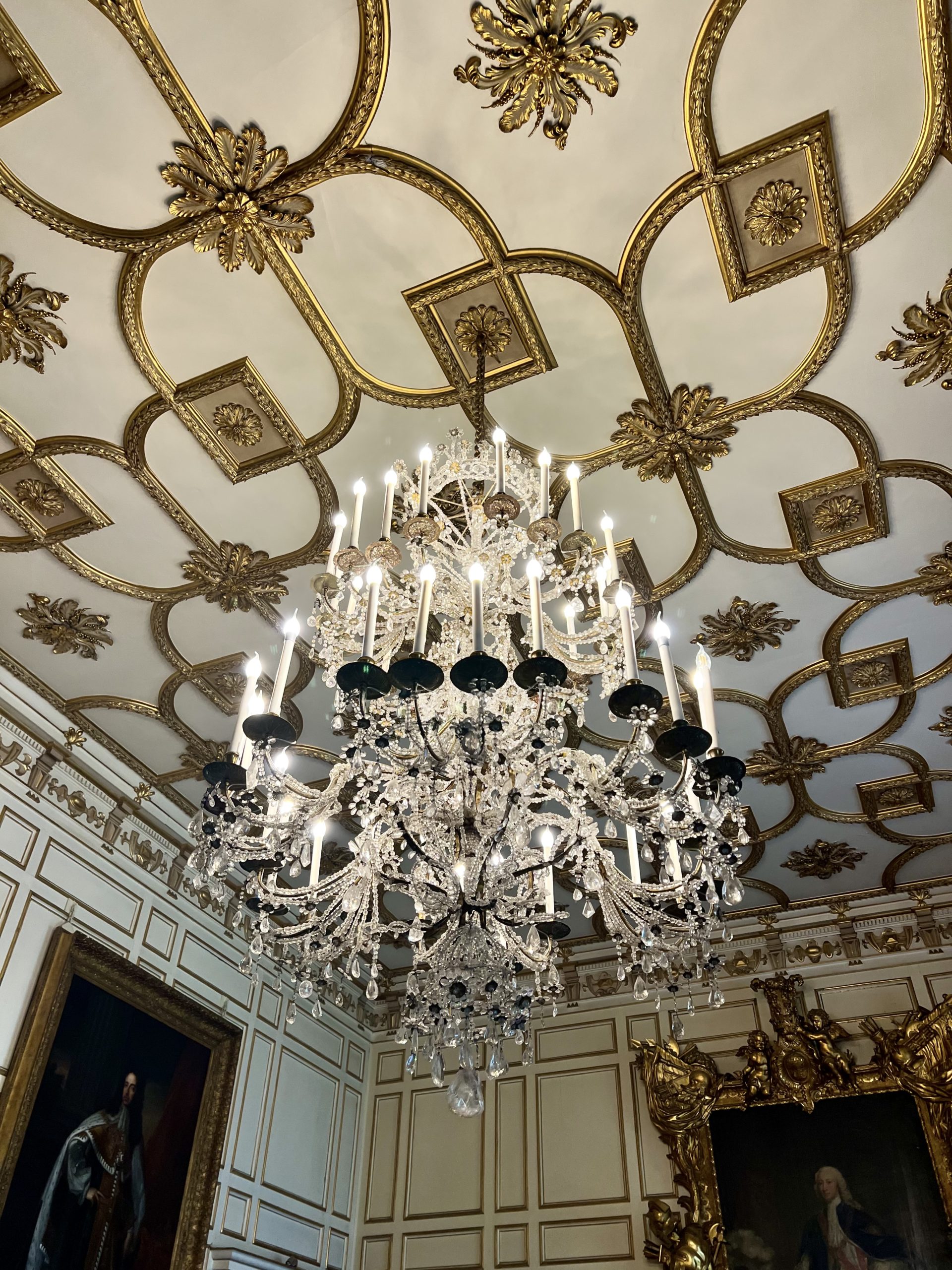
The tapestries in the room date from the 17th century and were woven in Delft. They represent episodes from Ovid’s Metamorphosis.
The Blue Boudoir is adjacent to the state bedroom and was originally its dressing room. The room gets its name from the French blue silk decorating it. The room is hung with many portraits, including one of Daisy Greville.
Daisy used to dress up as Marie Antoinette in this room and then attend fancy balls. There’s a clock once owned by Marie Antoinette in the room.
The State Dining Room was built in 1763. It was used as an alternative, more intimate, dining space than the Great Hall. A gleaming oak Victorian table is set for dinner for 30.
The room is paneled in cream wood with gilt. The 18th century Genoese chandelier was originally lit with 42 candles. There’s a Van Dyke portrait of Charles I.
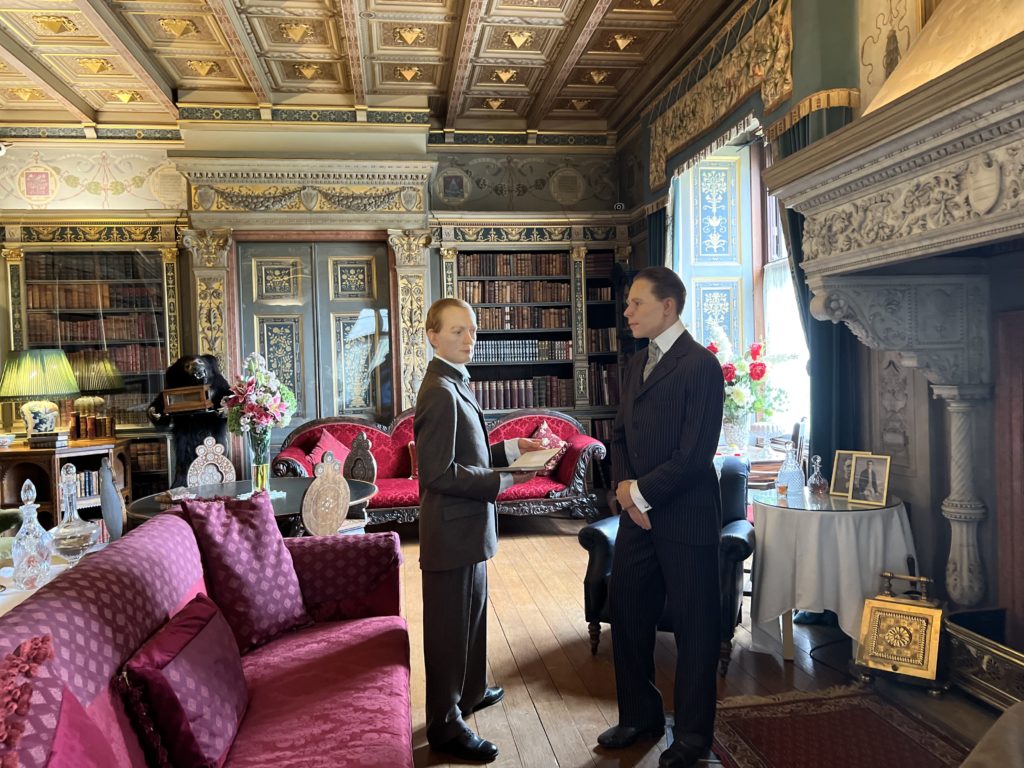
5. The Royal Weekend Party
Perhaps the piece de resistance of Warwick Castle is the Royal Weekend Party exhibit.
You’ll see twelve rooms furnished as they were in 1898 when Francis Greville, the Countess of Warwick, held a lavish weekend party in honor of the Prince of Wales, the future Edward VII.
Frances was a renowned hostess, who was known as Daisy to her friends. She was the lady that inspired the famous song Daisy, Daisy Give Your Answer Do.
Her guests were a who’s who of upper echelon Victorian society. You’ll see a wax figure of a very young Winston Churchill in the library. Look for him because he’s easy to miss.
In the Kenilworth bedroom, you’ll see the Prince of Wales talking politics. It’s rumored that Daisy, the lady of the house, was having an affair with him, which is why he visited the castle so often.
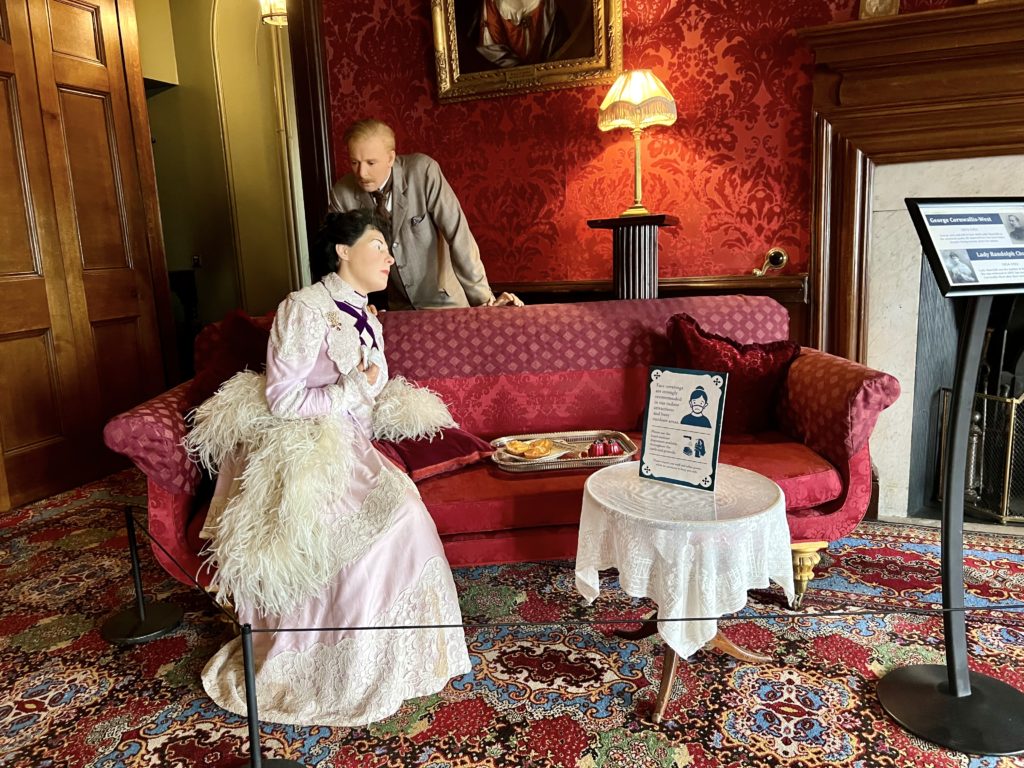
6. Medieval Dungeon
You have to book a separate ticket for the dungeon and arrive at your allocated time. You can buy it when you enter the castle.
Visiting the dungeon is a 50 minute immersive experience. It uses live actors and is intentionally scary, so perhaps not suitable for long children under 10. A witch will regal you with tales of the “Cursed Castle.”
I didn’t do the tour myself because it was rather expensive and not up my alley.
7. Time Tower
This is one of Warwick Castle’s high tech attractions. It’s a multimedia audiovisual experience. Characters from the castle’s past regal you with legends and tales.
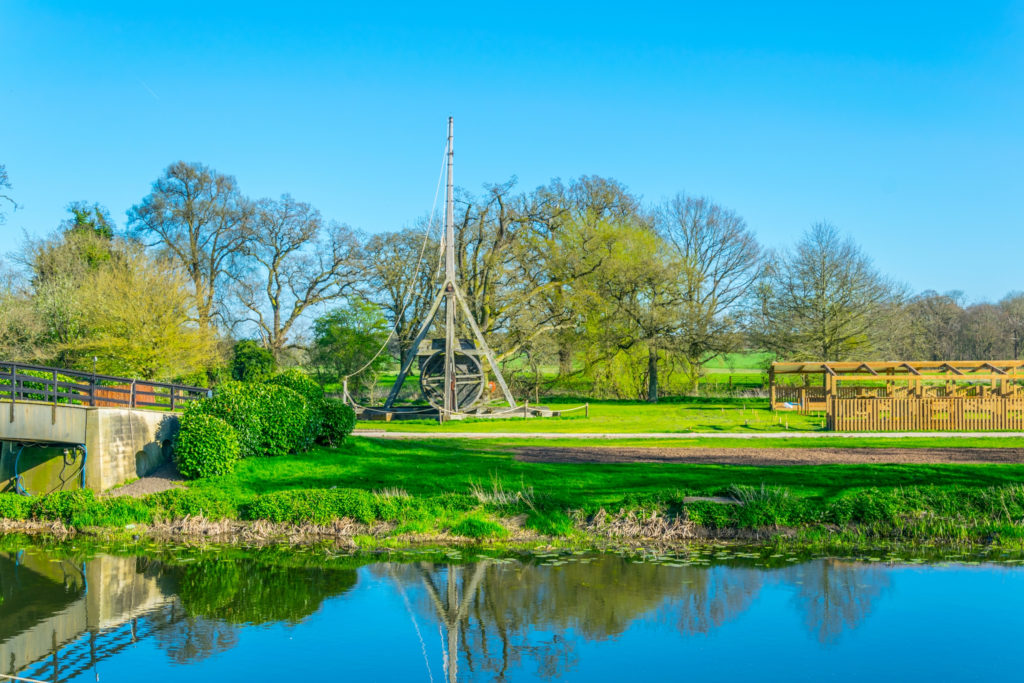
8. Trebuchet Show
The trebuchet was the largest siege machine in the world. In medieval times, the weapon was used as a catapult to hurl rocks and other projectiles in an attempt to break down castle walls.
The one at Warwick Castle is a replica, built in 2005. It’s based on designs from the 13th and 14th centuries. It’s nicknamed Ursa, which means bear in Latin.
Costumed actors in armor, complete with swords, help give the exhibit a step back in time vibe.
9. Falconer’s Quest
This exhibit is set alongside the river. 60 birds of prey, including eagles, hawks, vultures, and owls, are let free in a dramatic display. The commentary is interesting and informative.
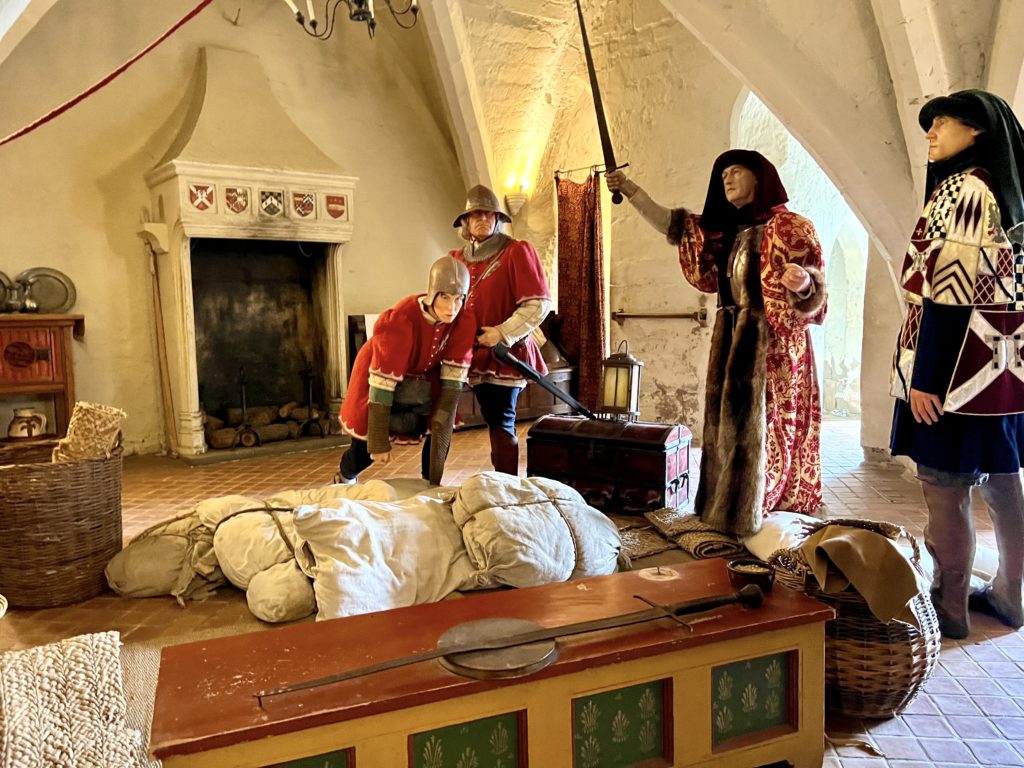
10. Kingmaker Exhibit
This exhibit is a walk through exhibit where you see and learn how the Kingmaker prepared for the Battle of Barnet in 1471. It’s housed in the undercroft or underground area of the castle.
At this point in the War of the Roses, the Kingmaker was fighting on the side of Lancastrians against Edward IV and the House of York. Neville lost his life in the battle and Edward IV was restored as king.
As you walk through the exhibit, you’ll see bootmakers, armorers, blacksmiths, and a fletcher making arrows. Women in pointy hats make banners for the earl. In a final scene, the Kingmaker is rallying the troops.
11. Princess Tower
Entry to the Princess Tower is included in your ticket. But you need to pick up a timed entry ticket at the tower to claim a time to visit. They are given out on a first come first served basis, with 30 people let in per time slot.
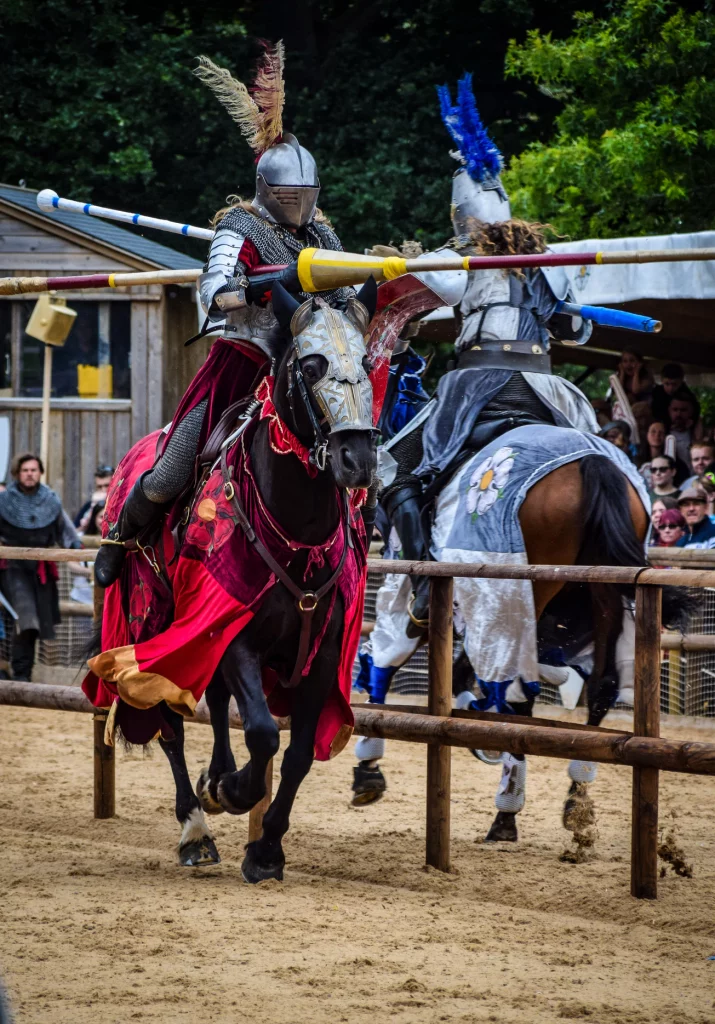
The tower provides an interactive storytelling experience aimed at younger children. The kids are involved in helping a princess defeat an evil sorcerer and break the curse on her suitor.
12. Archery
This is a popular attraction for kids at Warwick Castle. Costumed archers compete in tournaments. Kids can also try their hand at the bow and arrow with an expert archer.
13. Horrible Histories Maze
The maze is based on the popular children’s books Horrible Histories. It’s an immersive and interactive maze that kids will love.
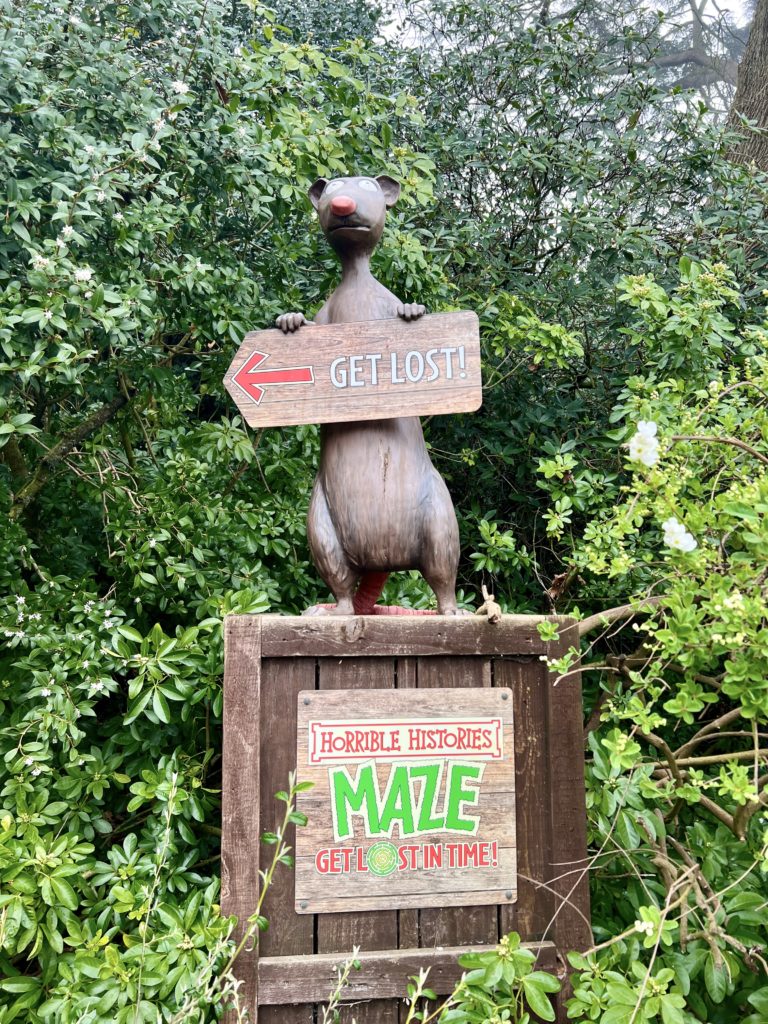
Tips For Visiting Warwick Castle
1. How To Get To Warwick Castle
The Castle is well sign posted, and less than two miles from junction 15 of the M40.
There’s a direct train service to Warwick from London Marylebone (1 hour 45 mins) or Birmingham Snow Hill (40 mins).
Warwick Railway Station is approximately one mile from the Castle. It’s about a 15 minute walk.
If you’re driving, Warwick Castle has 3 different parking areas. You’ll want to pay close attention to which you use because it means parking just next to the admissions area or having a 15-20 minute walk from your car to the castle.
You can also book a guided tour from London, as I mentioned above.
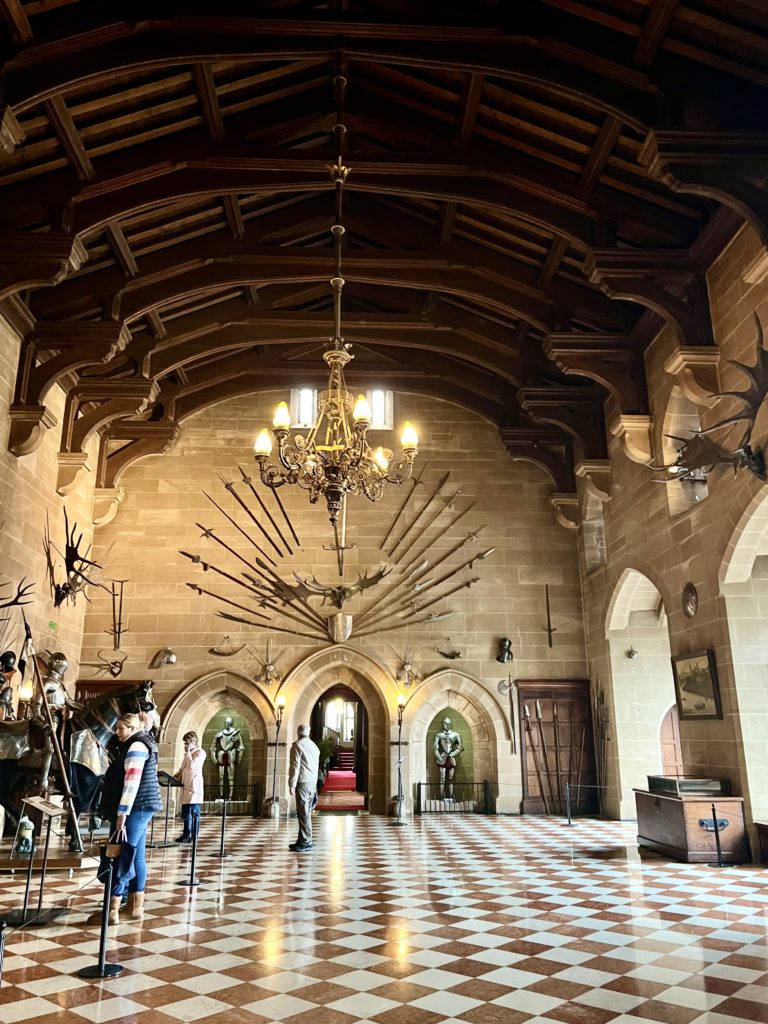
2. Is Warwick Castle Worth Visiting?
Warwick Castle tends to draw mixed reactions. Is it a tourist trap or a colorful evocation of Britain’s Middle Ages?
History buffs like me will appreciate the journey through antiquity in an authentic medieval castle, complete with towers and ramparts. You can literally walk in the footsteps of important figures who shaped the history of England.
Kids will love the birds, archery, and maze. Families could easily spend the entire day at Warwick.
Others may think that the kid-friendly exhibits are tacky or blasphemous, rendering the castle an expensive Disney-fied theme park.
I didn’t feel that way myself. I just ignored the entertainment for the most part.
But even adults may think some of it’s great fun. Who doesn’t want to see a trebuchet in action? The money from admissions is also what allows the castle to even exist and stay preserved.
3. Where To Stay Near Warwick Castle
The Knight’s Village at Warwick Castle is right the grounds. It has high vaulted suites and 4 poster beds. Warwick Castle Tower Suites allows you to stay in your own medieval castle hidden within Caesar’s Tower.
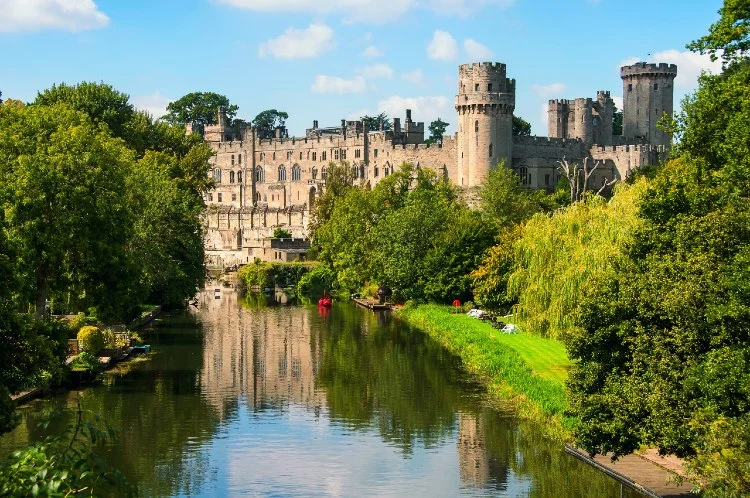
4. Practical Information & Tips For Visiting Warwick Castle
Address: Castle Lane Warwick CV34 4QU
Hours: Open daily 10:00 am to 4:00 pm.
Entry fee: Tickets are 25 pounds, 27 on weekends. But Warwick has a rainy day guarantee. That means if it rains for an hour or more during your visit, you get a free return visit with 60 days.
Pro Tips:
You may want to bring a picnic for your visit. The cafes aren’t exactly cheap and there may be long lines.
If you have the flexibility, try not to visit on a weekend when Warwick will be busy.
At Christmas, the castle is decorated in Victorian style and you can take carriage rides.
Not all activities occur every day. So check the website to see what to expect to on your visit. For example, the Falconer’s Quest only runs from April through October.
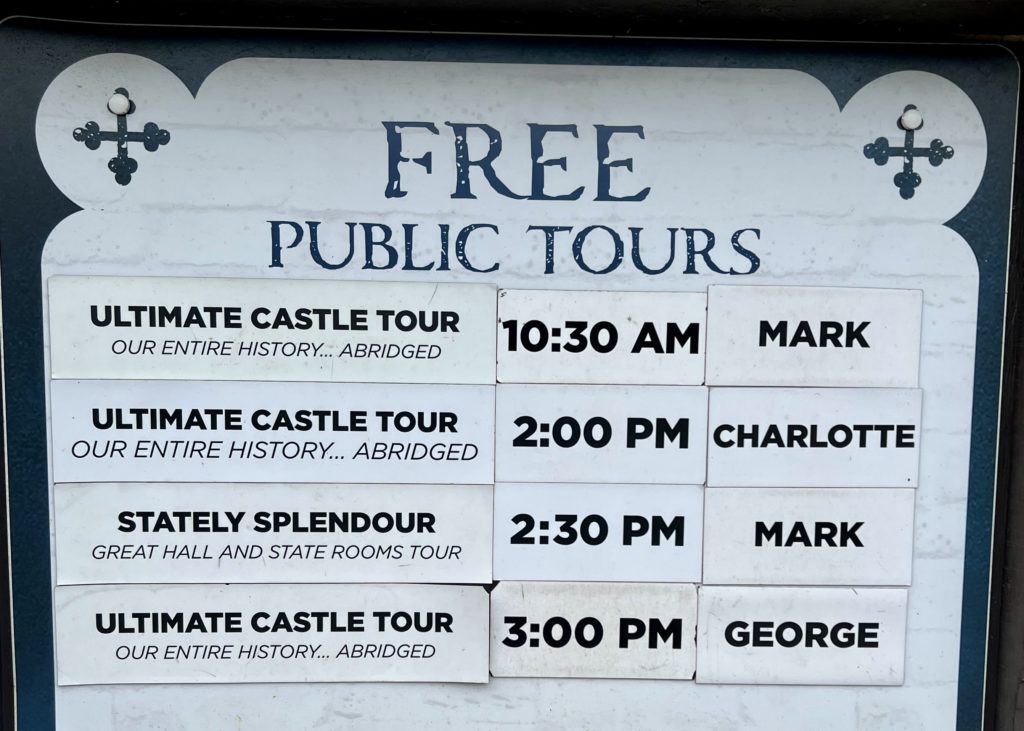
Free Tours: Several time a day there are free history talks and tours.
Cafes:
There are three restaurants onsite. The Undercroft Cafe offers hot and cold snacks, sandwiches, and pastries.
The Conservatory Tea House in the garden offers light lunches and teas. Courtyard Refreshments is on the grounds and offers up traditional British food like fish and chips.
I hope you’ve enjoyed my guide to Warwick Castle. You may enjoy these other England travel guides:
- 3 Day Itinerary for London
- 5 Day Itinerary for London
- Best Museums in London
- Harry Potter Places in London
- Guide to the National Gallery of Art
- Guide to St. Paul’s Cathedral
- Guide to the Tate Britain
- Guide to Wesminster Abbey
- London Tourist Traps To Avoid
- Guide to the Tower of London
- Guide to the Churchill War Rooms
If you need a guide to Warwick Castle, pin it for later.

